Bowel Stool Colors: Understanding What Different Shades Mean for Your Health
What does the color of your stool indicate about your health. How can diet affect stool color. When should you be concerned about changes in stool color. What are the potential causes of unusual stool colors.
The Spectrum of Stool Colors: What Your Poop Is Telling You
The color of your stool can provide valuable insights into your digestive health and overall well-being. While variations in stool color are often harmless and related to diet, certain shades may indicate underlying health issues that require attention. Understanding the meaning behind different stool colors can help you monitor your health and know when to seek medical advice.
Normal Stool Color: Shades of Brown
Healthy stool typically appears brown due to the presence of bile and bilirubin, a byproduct of red blood cell breakdown. The brown color results from chemical changes that occur as bile pigments travel through the digestive system. However, it’s important to note that “normal” can vary slightly from person to person.
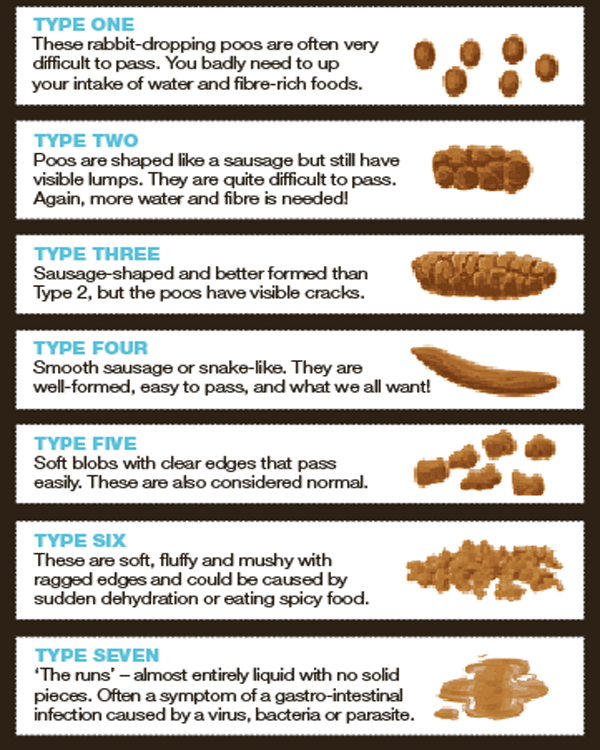
Why is poop brown?
Poop is brown primarily due to the presence of bile, a fluid produced by the liver to aid in fat digestion. As bile travels through the digestive tract, it undergoes chemical changes, transforming from a yellowish-green color to the familiar brown hue we associate with healthy stool.
Green Stool: Causes and Implications
Green stool is a common occurrence and usually not a cause for concern. In most cases, it’s related to dietary factors or rapid intestinal transit.
What foods can cause green poop?
Several foods and supplements can contribute to green-colored stool:
- Leafy green vegetables (e.g., spinach, kale)
- Green food coloring in drinks or desserts
- Iron supplements
In some cases, green stool may result from food moving through the digestive system too quickly, preventing bile from breaking down completely and maintaining its greenish hue.
Yellow Stool: Potential Signs of Digestive Issues
While yellow stool can be normal for some individuals, particularly breastfed infants, it may sometimes indicate digestive problems in adults.
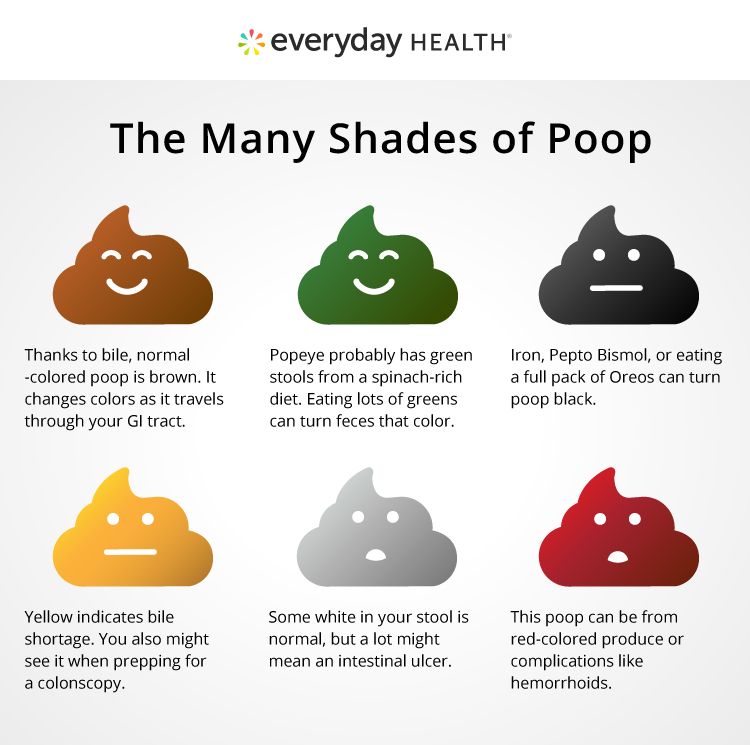
Can yellow stool indicate malabsorption?
Yes, yellow, greasy, and foul-smelling stool may suggest excess fat content, potentially indicating malabsorption issues. This could be related to conditions such as celiac disease, where the body cannot properly process gluten.
If you frequently experience yellow, greasy stools, it’s advisable to consult a healthcare professional for further evaluation.
White or Clay-Colored Stool: A Cause for Concern
Pale or clay-colored stool is often a sign that warrants medical attention, as it may indicate a lack of bile in the stool.
What can cause white or pale stool?
Several factors can contribute to white or pale-colored stool:
- Certain medications (e.g., bismuth subsalicylate)
- Barium sulfate, used in some diagnostic imaging procedures
- Liver diseases, such as hepatitis
- Blockages in the bile ducts
- Gallstones
- Tumors
- Biliary atresia (a congenital condition)
If you notice persistent pale or clay-colored stools, it’s crucial to seek medical advice promptly.

Black Stool: When to Be Concerned
Black stool can be alarming, but it’s not always a sign of a serious problem. Understanding the potential causes can help you determine whether medical attention is necessary.
Is black stool always a sign of bleeding?
No, black stool isn’t always indicative of bleeding. Certain foods and medications can cause dark or black stools:
- Black licorice
- Blueberries
- Iron supplements
- Bismuth subsalicylate-containing medications
However, if your stool appears tar-like and you haven’t consumed these items, it could signal upper gastrointestinal bleeding. Potential causes include:
- Stomach ulcers
- Esophageal sores from acid reflux
- Noncancerous tumors in the upper GI tract
- Cancer
If you experience black, tarry stools without an apparent dietary cause, seek immediate medical attention.
Red or Reddish Stool: Dietary Influence vs. Health Concerns
Red or reddish stool can be alarming, but it’s often related to diet rather than a health issue. However, it’s essential to differentiate between benign causes and potential signs of bleeding.
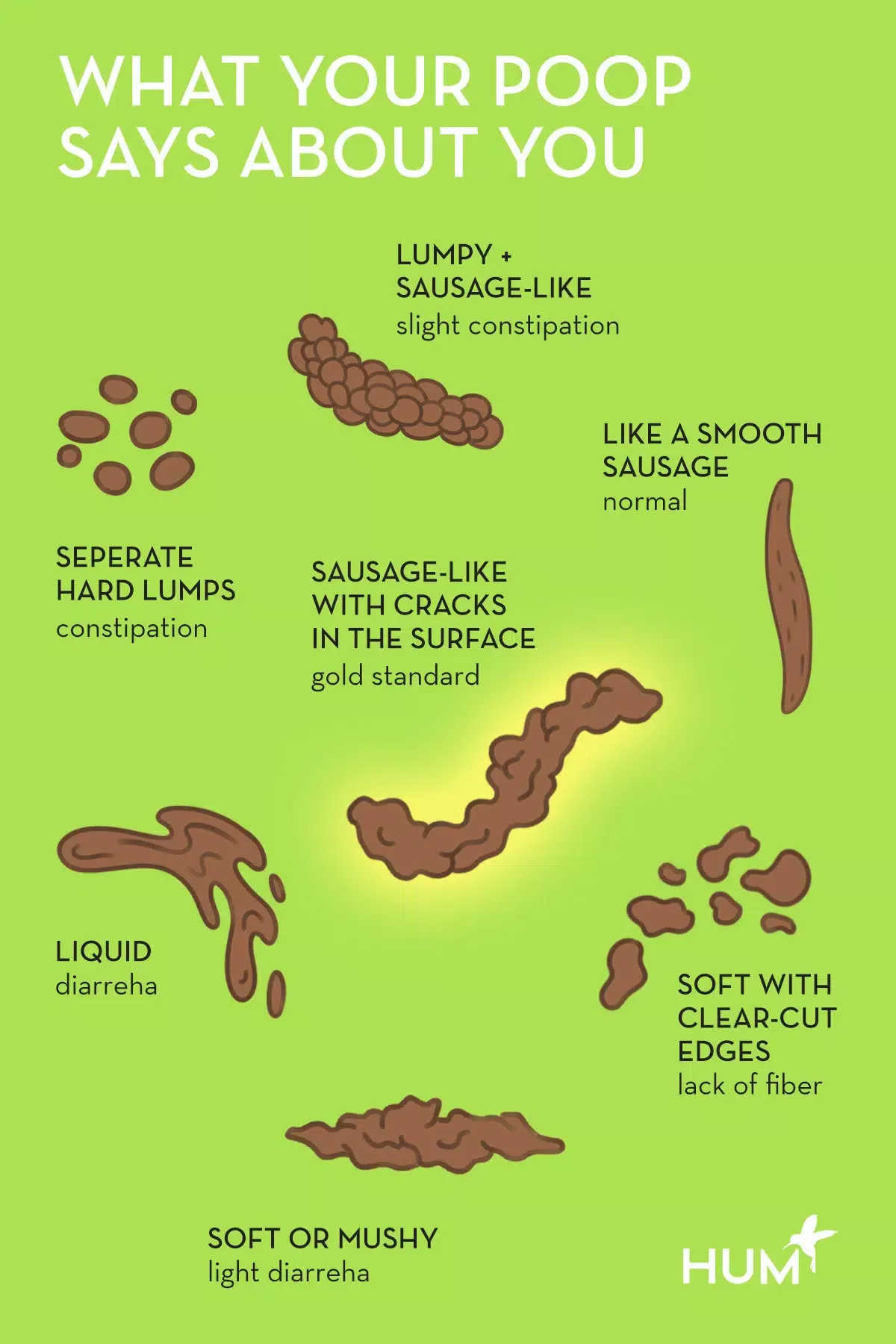
Can certain foods cause red stool?
Yes, several foods can impart a red or reddish hue to your stool:
- Beets
- Tomato soup
- Red-colored gelatin desserts
- Red drinks or food coloring
If you’ve recently consumed these items, red stool is likely harmless. However, if the red color persists or is accompanied by other symptoms, it may indicate lower gastrointestinal bleeding.
When should you be concerned about red stool?
Red stool that isn’t attributable to diet may signal various health issues:
- Hemorrhoids
- Anal fissures
- Inflammatory bowel diseases (e.g., Crohn’s disease, ulcerative colitis)
- Diverticulosis
- Colorectal polyps or cancer
If you experience persistent red stools without a clear dietary cause, or if it’s accompanied by pain, changes in bowel habits, or other concerning symptoms, consult a healthcare professional promptly.
Orange Stool: Dietary Influences and Potential Health Implications
Orange-colored stool is less common but can occur due to various factors, ranging from dietary choices to potential health issues.

What causes orange stool?
Orange stool can result from:
- Consuming foods high in beta-carotene (e.g., carrots, sweet potatoes)
- Certain medications or supplements
- Reduced bile salt production or secretion
- Accelerated transit time through the digestive system
While orange stool is often harmless, persistent orange coloration without a clear dietary cause may warrant medical evaluation, especially if accompanied by other digestive symptoms.
Monitoring Stool Color: When to Seek Medical Advice
While occasional changes in stool color are usually not cause for alarm, certain situations require prompt medical attention.
When should you consult a doctor about stool color changes?
Consider seeking medical advice if you experience:
- Persistent changes in stool color lasting more than a few days
- Black, tarry stools not explained by diet or medications
- Bright red or maroon-colored stools without a dietary explanation
- Pale or clay-colored stools
- Changes in stool color accompanied by abdominal pain, fever, or changes in bowel habits
- Any concerning changes in stool appearance, consistency, or frequency
Remember, your stool can provide valuable insights into your digestive health. While most color variations are benign, being aware of what’s normal for you and recognizing potential warning signs can help you maintain optimal health and catch any issues early.

The Role of Diet in Stool Color Variations
Diet plays a significant role in determining stool color, often causing temporary changes that are generally harmless. Understanding how different foods can affect stool appearance can help alleviate unnecessary concerns and promote a better awareness of your digestive health.
How do different foods influence stool color?
Various foods can impact stool color in different ways:
- Green vegetables: May lead to green stools due to chlorophyll content
- Beets, red fruits, and food coloring: Can cause reddish or pinkish stools
- Blueberries and black licorice: May result in dark or black stools
- High-fat diets: Can lead to pale or clay-colored stools if fat isn’t properly absorbed
- Carrots and sweet potatoes: May cause orange-tinted stools
It’s important to note that these color changes are typically temporary and resolve once the food has passed through your system.
The Impact of Medications and Supplements on Stool Color
Certain medications and supplements can alter stool color, sometimes causing alarming changes that are actually harmless side effects.
:max_bytes(150000):strip_icc()/VWHealth-Why-Dry-January-Might-Mess-With-Your-Poop-Schedule-4-1bc1638d723d40928292f01272cd1968.jpg)
Which medications can affect stool color?
Several medications and supplements are known to influence stool color:
- Iron supplements: Often cause dark or black stools
- Bismuth subsalicylate (e.g., Pepto-Bismol): Can lead to black or darkened stools
- Antibiotics: May cause green stools in some individuals
- Antacids containing aluminum hydroxide: Can result in pale or clay-colored stools
If you’re taking any of these medications and notice changes in your stool color, consult with your healthcare provider to ensure it’s a normal side effect and not indicative of a more serious issue.
Stool Color as a Diagnostic Tool: What Doctors Look For
Healthcare professionals often use stool color as part of their diagnostic process, as it can provide valuable clues about various health conditions.
How do doctors use stool color in diagnosis?
Doctors consider several factors when evaluating stool color:
- Consistency and frequency of color changes
- Accompanying symptoms (e.g., abdominal pain, changes in bowel habits)
- Patient’s medical history and current medications
- Recent dietary changes or consumption of color-altering foods
Based on these factors, healthcare providers may order additional tests, such as blood work, stool samples, or imaging studies, to determine the underlying cause of persistent or concerning stool color changes.
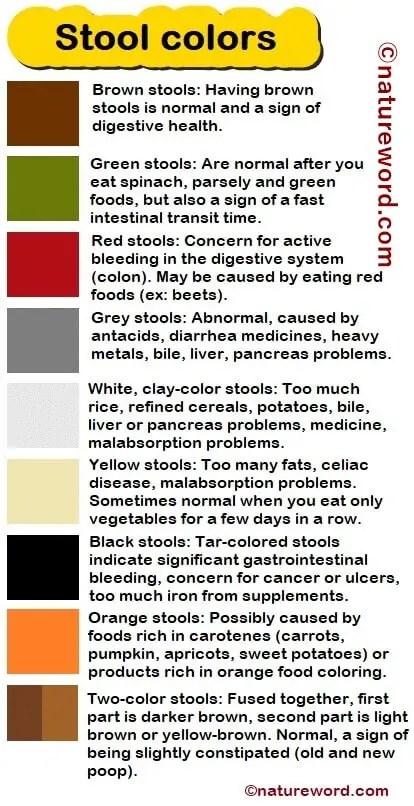
Maintaining Digestive Health: Beyond Stool Color
While monitoring stool color is important, it’s just one aspect of maintaining overall digestive health. Adopting a holistic approach to gut wellness can help prevent issues and promote optimal digestive function.
What are some tips for maintaining digestive health?
Consider implementing these strategies to support your digestive system:
- Eat a balanced diet rich in fiber, fruits, and vegetables
- Stay hydrated by drinking plenty of water throughout the day
- Exercise regularly to promote healthy bowel movements
- Manage stress through relaxation techniques or mindfulness practices
- Limit alcohol and caffeine consumption
- Avoid smoking and excessive use of NSAIDs
- Consider incorporating probiotic-rich foods or supplements into your diet
By focusing on overall digestive health, you can reduce the likelihood of experiencing concerning stool color changes and maintain a well-functioning digestive system.
The Gut-Brain Connection: How Stress Affects Digestive Health
The intricate relationship between the gut and the brain, often referred to as the gut-brain axis, plays a crucial role in digestive health and can even influence stool characteristics.

How does stress impact digestive function?
Stress can affect the digestive system in several ways:
- Altering gut motility, potentially leading to diarrhea or constipation
- Increasing inflammation in the digestive tract
- Affecting the balance of gut bacteria
- Exacerbating symptoms of existing digestive disorders
While stress-induced changes in stool color are less common, the overall impact of stress on digestive health can indirectly affect stool appearance and consistency. Managing stress through various techniques can help maintain optimal gut function and overall well-being.
The Role of Gut Microbiome in Stool Characteristics
The gut microbiome, comprised of trillions of microorganisms living in your digestive tract, plays a significant role in various aspects of health, including stool characteristics.
How does the gut microbiome influence stool?
The gut microbiome affects stool in several ways:
- Influencing stool consistency and frequency
- Contributing to the breakdown of certain foods and nutrients
- Producing compounds that can affect stool color and odor
- Supporting the immune system and overall gut health
Maintaining a diverse and healthy gut microbiome through a balanced diet, regular exercise, and stress management can contribute to optimal digestive function and consistent, healthy stools.

What Do Different Poop Colors Mean?
Written by Hope Cristol
- What Do Different Stool Colors Mean?
- Normal Poop Color
- Green Poop
- Yellow Poop
- White, Pale, or Clay-Colored Poop
- Black Poop
- Red or Reddish Poop
- Orange Poop
- When to Get Help for Poop Color Changes
- More
Different stool colors can mean different things, mostly depending on what you’ve eaten.
You’d probably notice if your poop is a different hue than normal. But what does it mean if it’s green? What about red, yellow, white, or black? Or orange?
Most of the time, minor changes in the color of your waste are due to diet. After all, we don’t eat the same thing at every meal, every day. But sometimes a color change can signal a minor health issue. In rare cases, it means something serious is wrong in your digestive system.
If the color you see before you flush worries you, call your doctor.
Poop is normally brown. The color is the result of what you eat and how much bile is in your stool.
The color is the result of what you eat and how much bile is in your stool.
Bile is a fluid your liver makes to digest fats. It starts out as a yellowish green color. But as the pigments that give bile its color travel through your digestive system, they go through chemical changes and turn brown.
Your poop can sometimes have a slightly greenish hue, or even be a more vivid green. Most of the time, green or greenish poop is normal.
Is your diet causing green poop?
Think back on what you’ve been eating. These foods and supplements can cause your poop to be green:
- Green veggies, like spinach or kale
- Green food coloring, such as in drink mixes or ice pops
- Iron supplements
Other causes of green poop
If you have green diarrhea, the color of your food may not be to blame. It’s likely that your meal moved through your gut too quickly, so the fat-digesting bile didn’t have time to turn brown.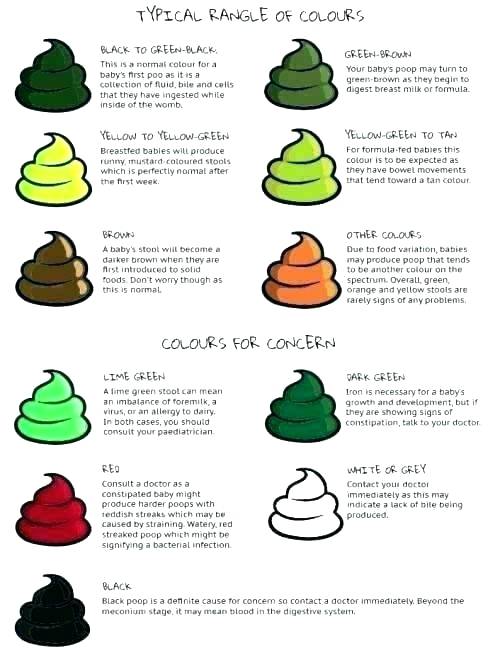
There may be times when your poop looks more yellow than brown.
This shade is also normal for many people. It’s common for babies, especially those who breastfeed. But if you have yellow poop that looks greasy and smells very bad, it may have too much fat. That could be a sign your body isn’t digesting food properly.
Is your diet causing yellow poop?
Indirectly, your diet could cause yellow poop. If you have celiac disease, your body can’t handle a protein called gluten, which is in wheat, barley, and rye. If you have the condition and eat foods that have gluten, like many breads, pastas, and cookies, your intestines won’t work as they should. So, if you’re eating those foods, and your poop is yellow, it may be time to see a doctor.
Other causes of yellow poop
There may be other causes of yellow poop that’s greasy and smelly. If it happens to you often, tell your doctor.
Sometimes, poop may not have much color at all.
Is your diet causing pale poop?
If your poop is pale, it’s not likely directly due to a food. But medicines for diarrhea like bismuth subsalicylate (Kaopectate, Pepto-Bismol) can sometimes cause pale or clay-colored poop. So can barium, a chalky liquid you drink before you get X-rays of the upper part of your digestive tract.
Other causes of pale poop
A more serious cause is a lack of bile in your stool. (Remember, bile gives poop its brown color.) Your body makes bile in the liver, stores it in the gallbladder, and releases it into your small intestine to help digest your food. If there’s not enough of it to give your poop its typical brown color, it could be a sign of a problem along the way.
Liver disease, such as hepatitis, can keep bile from getting into your body waste. So can a blockage in the tubes (called ducts) that carry bile. This can happen because of:
- Gallstones
- A tumor
- A condition you’re born with called biliary atresia
Babies’ poop is black for the first few days after they’re born. Otherwise, it may be because you ate something very dark-colored or took a medicine or supplement that causes black poop. But this color can be a sign of a more serious problem: bleeding in the upper part of your digestive tract.
Otherwise, it may be because you ate something very dark-colored or took a medicine or supplement that causes black poop. But this color can be a sign of a more serious problem: bleeding in the upper part of your digestive tract.
Is your diet causing black poop?
Foods and supplements that turn poop black include:
- Black licorice
- Blueberries
- Iron supplements
Medicines that have bismuth subsalicylate (Kaopectate, Pepto-Bismol) can also cause very dark stools.
Other causes of black poop
Poop that looks like tar is often a sign of bleeding in the digestive tract. Some causes include:
- Bleeding from stomach ulcers
- Bleeding sores in your esophagus from acid reflux
- Bleeding from noncancerous tumors in the upper GI tract
- Cancer
If you don’t think black poop came from what you ate, you need to talk to your doctor.
If you see red or reddish poop in the toilet, don’t be alarmed right away. First ask yourself if you’ve had red foods lately.
First ask yourself if you’ve had red foods lately.
Is your diet causing red or reddish poop?
Several foods can change the color of your stool to a pink or reddish color:
- Beets
- Tomato soup
- Gelatin dessert
- Red drinks
Other causes of red or reddish poop
If you don’t think your diet is the cause, the red you see may be blood. And if it’s bright red, the blood likely comes from the lower part of your digestive tract. Common causes include:
- Noncancerous tumors
- Cancer
- Inflammation in the colon, called colitis
- Growths called polyps in your colon
- Conditions caused by small sacs in the wall of the colon, called diverticular disease
- Hemorrhoids
Call your doctor if you see red that’s probably not from food you ate.
Poop can often come out the color of the food that went in, especially if you have diarrhea. If your poop has an orange hue, it’s most likely due to some orange foods.
Is your diet causing orange poop?
Foods that have beta-carotene can turn your poop orange, such as:
- Carrots
- Winter squash
- Pumpkin
- Sweet potatoes
Foods with orange coloring, such as sodas, candy, or gelatin dessert, can also give your poop an orange color.
Also, antibiotics and antacids that have aluminum hydroxide in them can make your stool orange.
Other causes of orange poop
Rarely, poop can be orange if you have a problem with your liver that causes it to make less bile than normal, or a blockage that keeps bile from leaving the liver and entering your system. But usually, if this is the case, your poop will be pale or clay-colored.
Most of the time, poop that’s a different color from what you’re used to isn’t something to worry about. It’s rare for it to be a sign of a serious condition in your digestive system. But if it’s white, bright red, or black, and you don’t think it’s from something you ate, call your doctor.
Top Picks
What Do Different Poop Colors Mean?
Written by Hope Cristol
- What Do Different Stool Colors Mean?
- Normal Poop Color
- Green Poop
- Yellow Poop
- White, Pale, or Clay-Colored Poop
- Black Poop
- Red or Reddish Poop
- Orange Poop
- When to Get Help for Poop Color Changes
- More
Different stool colors can mean different things, mostly depending on what you’ve eaten.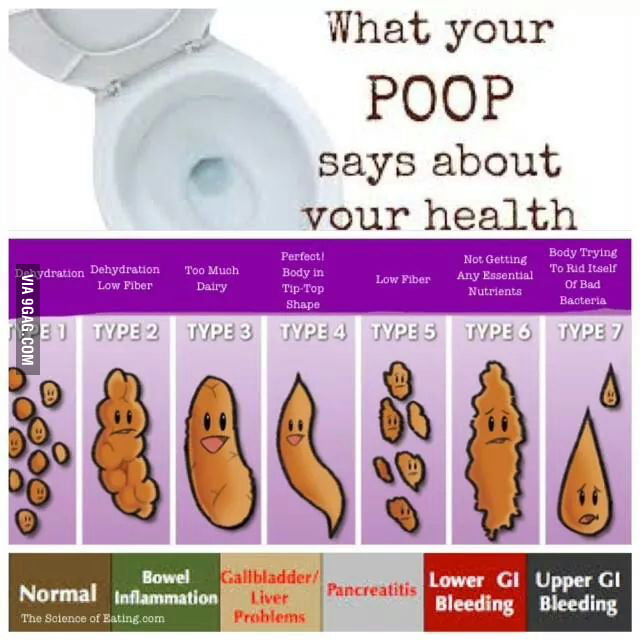
You’d probably notice if your poop is a different hue than normal. But what does it mean if it’s green? What about red, yellow, white, or black? Or orange?
Most of the time, minor changes in the color of your waste are due to diet. After all, we don’t eat the same thing at every meal, every day. But sometimes a color change can signal a minor health issue. In rare cases, it means something serious is wrong in your digestive system.
If the color you see before you flush worries you, call your doctor.
Poop is normally brown. The color is the result of what you eat and how much bile is in your stool.
Bile is a fluid your liver makes to digest fats. It starts out as a yellowish green color. But as the pigments that give bile its color travel through your digestive system, they go through chemical changes and turn brown.
Your poop can sometimes have a slightly greenish hue, or even be a more vivid green. Most of the time, green or greenish poop is normal.
Is your diet causing green poop?
Think back on what you’ve been eating. These foods and supplements can cause your poop to be green:
- Green veggies, like spinach or kale
- Green food coloring, such as in drink mixes or ice pops
- Iron supplements
Other causes of green poop
If you have green diarrhea, the color of your food may not be to blame. It’s likely that your meal moved through your gut too quickly, so the fat-digesting bile didn’t have time to turn brown.
There may be times when your poop looks more yellow than brown.
This shade is also normal for many people. It’s common for babies, especially those who breastfeed. But if you have yellow poop that looks greasy and smells very bad, it may have too much fat. That could be a sign your body isn’t digesting food properly.
Is your diet causing yellow poop?
Indirectly, your diet could cause yellow poop. If you have celiac disease, your body can’t handle a protein called gluten, which is in wheat, barley, and rye.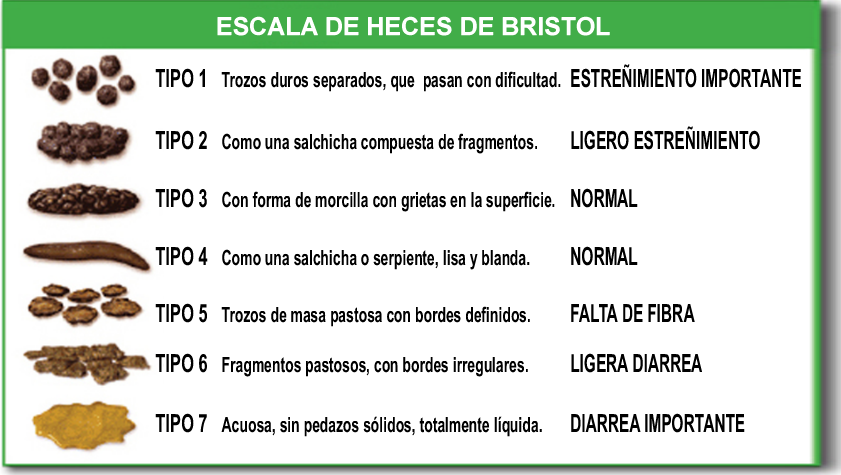 If you have the condition and eat foods that have gluten, like many breads, pastas, and cookies, your intestines won’t work as they should. So, if you’re eating those foods, and your poop is yellow, it may be time to see a doctor.
If you have the condition and eat foods that have gluten, like many breads, pastas, and cookies, your intestines won’t work as they should. So, if you’re eating those foods, and your poop is yellow, it may be time to see a doctor.
Other causes of yellow poop
There may be other causes of yellow poop that’s greasy and smelly. If it happens to you often, tell your doctor.
Sometimes, poop may not have much color at all.
Is your diet causing pale poop?
If your poop is pale, it’s not likely directly due to a food. But medicines for diarrhea like bismuth subsalicylate (Kaopectate, Pepto-Bismol) can sometimes cause pale or clay-colored poop. So can barium, a chalky liquid you drink before you get X-rays of the upper part of your digestive tract.
Other causes of pale poop
A more serious cause is a lack of bile in your stool. (Remember, bile gives poop its brown color.) Your body makes bile in the liver, stores it in the gallbladder, and releases it into your small intestine to help digest your food. If there’s not enough of it to give your poop its typical brown color, it could be a sign of a problem along the way.
If there’s not enough of it to give your poop its typical brown color, it could be a sign of a problem along the way.
Liver disease, such as hepatitis, can keep bile from getting into your body waste. So can a blockage in the tubes (called ducts) that carry bile. This can happen because of:
- Gallstones
- A tumor
- A condition you’re born with called biliary atresia
Babies’ poop is black for the first few days after they’re born. Otherwise, it may be because you ate something very dark-colored or took a medicine or supplement that causes black poop. But this color can be a sign of a more serious problem: bleeding in the upper part of your digestive tract.
Is your diet causing black poop?
Foods and supplements that turn poop black include:
- Black licorice
- Blueberries
- Iron supplements
Medicines that have bismuth subsalicylate (Kaopectate, Pepto-Bismol) can also cause very dark stools.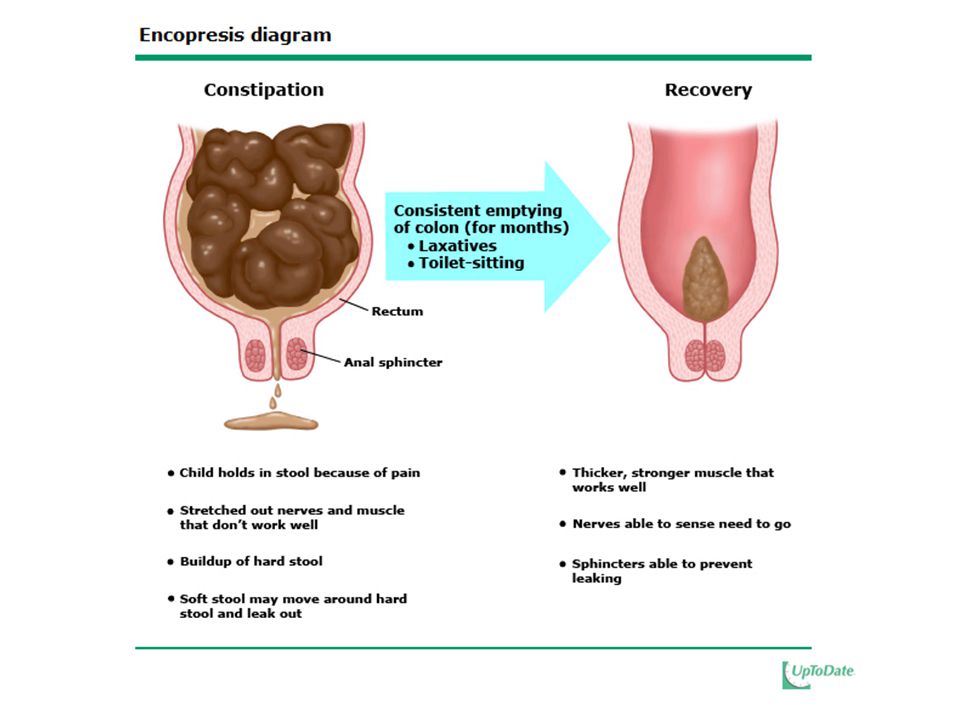
Other causes of black poop
Poop that looks like tar is often a sign of bleeding in the digestive tract. Some causes include:
- Bleeding from stomach ulcers
- Bleeding sores in your esophagus from acid reflux
- Bleeding from noncancerous tumors in the upper GI tract
- Cancer
If you don’t think black poop came from what you ate, you need to talk to your doctor.
If you see red or reddish poop in the toilet, don’t be alarmed right away. First ask yourself if you’ve had red foods lately.
Is your diet causing red or reddish poop?
Several foods can change the color of your stool to a pink or reddish color:
- Beets
- Tomato soup
- Gelatin dessert
- Red drinks
Other causes of red or reddish poop
If you don’t think your diet is the cause, the red you see may be blood. And if it’s bright red, the blood likely comes from the lower part of your digestive tract.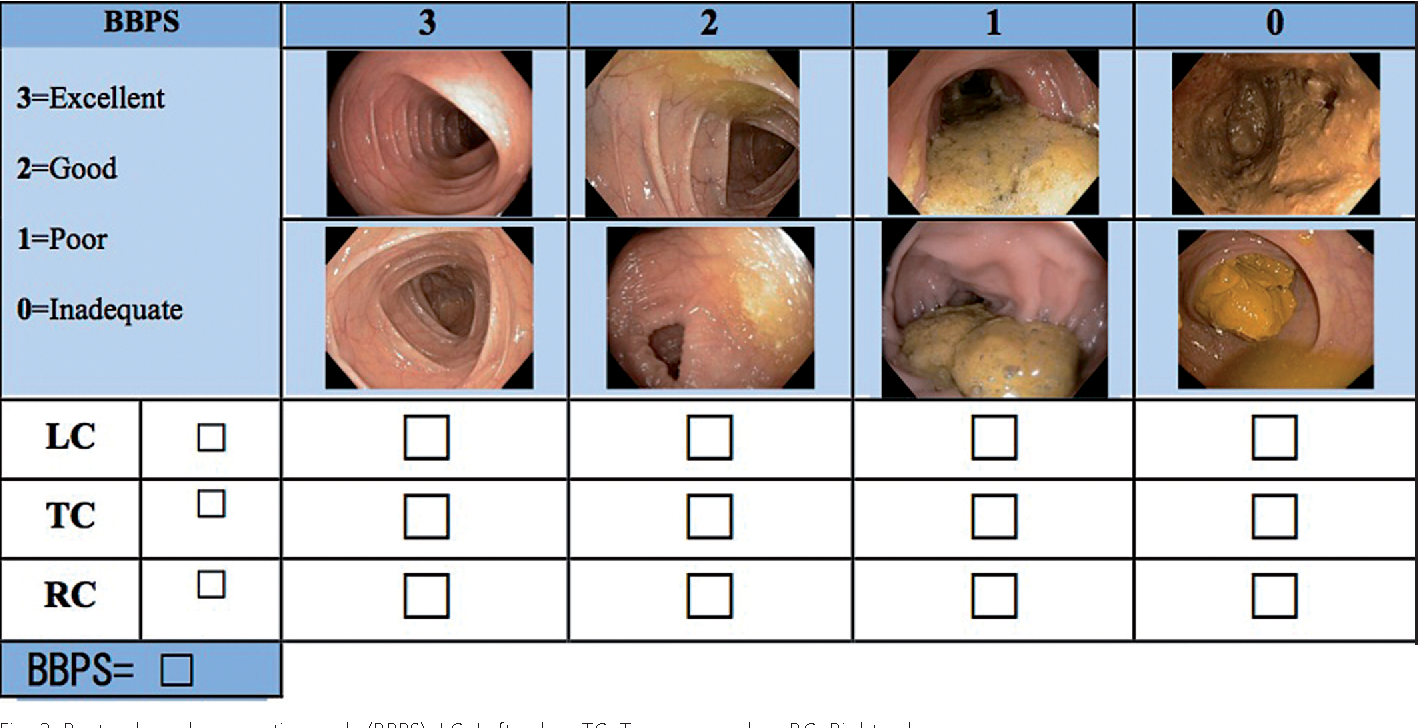 Common causes include:
Common causes include:
- Noncancerous tumors
- Cancer
- Inflammation in the colon, called colitis
- Growths called polyps in your colon
- Conditions caused by small sacs in the wall of the colon, called diverticular disease
- Hemorrhoids
Call your doctor if you see red that’s probably not from food you ate.
Poop can often come out the color of the food that went in, especially if you have diarrhea. If your poop has an orange hue, it’s most likely due to some orange foods.
Is your diet causing orange poop?
Foods that have beta-carotene can turn your poop orange, such as:
- Carrots
- Winter squash
- Pumpkin
- Sweet potatoes
Foods with orange coloring, such as sodas, candy, or gelatin dessert, can also give your poop an orange color.
Also, antibiotics and antacids that have aluminum hydroxide in them can make your stool orange.
Other causes of orange poop
Rarely, poop can be orange if you have a problem with your liver that causes it to make less bile than normal, or a blockage that keeps bile from leaving the liver and entering your system. But usually, if this is the case, your poop will be pale or clay-colored.
But usually, if this is the case, your poop will be pale or clay-colored.
Most of the time, poop that’s a different color from what you’re used to isn’t something to worry about. It’s rare for it to be a sign of a serious condition in your digestive system. But if it’s white, bright red, or black, and you don’t think it’s from something you ate, call your doctor.
Top Picks
Is it possible to determine bowel disease by feces?
During an appointment with a gastroenterologist, many patients avert their eyes to the question: “How long have you been paying attention to the result of the work of the gastrointestinal tract?” It’s not embarrassing!
In our opinion, it is much sadder if you have never looked at your feces. Such observations are a very important method of self-diagnosis and diagnostics in general. It is periodic observation that is dominant, and not one single look at the stool in the morning before a visit to the doctor.
Such observations are a very important method of self-diagnosis and diagnostics in general. It is periodic observation that is dominant, and not one single look at the stool in the morning before a visit to the doctor.
A change in stool parameters is one of the main symptoms of most diseases of the intestines and the gastrointestinal tract in general.
Indicators to pay attention to when self-diagnosing stools :
- frequency per day and per week;
- consistency and volume;
- change in the frequency and consistency of the stool, in comparison with how it was before, when peace and tranquility reigned in the stomach;
- impurities in the stool and its color;
- cases of unsuccessful or excessive urge to empty the bowels;
- lack of urge to defecate or feeling of incomplete emptying of the bowels.
You don’t have to look for a problem where there isn’t one, and you certainly shouldn’t turn a blind eye to alarming symptoms. To determine what is the norm, it is important to understand that each organism is individual!
To determine what is the norm, it is important to understand that each organism is individual!
Normal chair characteristics
- Frequency – usually 1-2 times a day, 3 to 7 times a week.
- Stool consistency, for quick orientation of the patient and the doctor in it, the Bristol scale, which was published back in 1997, is used. Let’s get to know her better. Depending on the diet, the amount of fiber, water, stools can normally vary from type 3 to type 5.
- Stool stability is perhaps the most difficult to explain: there should be no sudden changes in consistency, stool frequency during the week, +/- one type on the Bristol scale. Also important is the subjective sensation before, during and after the act of defecation. Here is a place for satisfaction and quiet joy, I’m quite serious!
- The color of the stool can be varied, it depends on the diet. Brown of different shades is considered optimal. We make an amendment for the color of food: a lot of dairy products in the diet – the stool will be lighter.
 It’s darker if you ate a dish with nori, a black burger. In addition, it is worth thinking about drugs or dietary supplements that you can take – bismuth and iron preparations give dark, closer to green stools.
It’s darker if you ate a dish with nori, a black burger. In addition, it is worth thinking about drugs or dietary supplements that you can take – bismuth and iron preparations give dark, closer to green stools.
Warning symptoms not to be ignored
- Smaller stools (less than 1 every 2 days or 3 times a week) or frequent stools (more than 2, rarely 3 times a day).
- Changes in shape and consistency. We will continue to get acquainted with the Bristol scale, not the norm in it: fragmented, “sheep” or dense, type 1-2 feces and, in contrast to it, mushy or watery stools, stools in separate flakes – type 6-7.
- Unstable stools – alternation of its consistency and frequency without any regularity, then 1 time per day, then 5, then type 3 on the Bristol scale, then 6. It is also important to notice what sensations accompanied the alternation of stool (good / bad).
- Color change. Pay attention to very light, closer to gray stools or very dark, black stools.
 Often yellow stools are also a sign of abnormality.
Often yellow stools are also a sign of abnormality. - The appearance of impurities in the feces is perhaps the most formidable, but a clear symptom:
🔸Blood. It can be scarlet, dark, it can be changed black. It can be in scarce amounts, only on a piece of paper or on the surface of the stool, it can be mixed with feces. It may drip or stand out excessively, but here you yourself will call an ambulance team without much thought.
There are many diseases, a disturbing symptom, however, one should not be afraid of examination, it is better than reaping the fruits of inaction.
🔸 Slime. Often we are faced with a misunderstanding of this term. I would describe it as follows: a clear viscous liquid, resembling saliva, can be mixed with the stool, can be separated on its own. May be released as foam.
🔸 A yellow-green admixture in the stool can be a sign of the presence of pus, which means inflammation, or an accelerated passage of bile through the gastrointestinal tract.

🔸Undigested pieces of food – the result of an accelerated work of the gastrointestinal tract and incomplete processing of the food product, pay attention to their composition (meat / vegetables), especially alarming if you see food consumed during the day.
- Ineffective or excessive urge to stool, as well as the absence of an urge to stool, may not be the norm, pay attention to this.
In case of abnormalities, consult a gastroenterologist.
Fecal tests for diagnosing bowel diseases
Tracking stool parameters is a simple and effective method that can be used for preliminary diagnosis. If deviations from the norm have appeared, in addition to consulting a gastroenterologist, stool tests will be required to help establish the cause of these deviations. Fecal analyzes are powerful non-invasive diagnostic tools.
Coprogram or general fecal analysis is the most famous, proven analysis. It examines the components of the processing of all foods (proteins, fats, carbohydrates), mucus, visible blood, inflammatory cells, sometimes even protozoan cysts or helminth eggs can be identified and described.
It examines the components of the processing of all foods (proteins, fats, carbohydrates), mucus, visible blood, inflammatory cells, sometimes even protozoan cysts or helminth eggs can be identified and described.
Fecal occult blood is a more accurate method for detecting blood in the stool, including altered, from the upper GI tract, in minimal quantities.
Fecal calprotectin – assay to detect inflammation in the intestine. It is especially interesting as a screening in older people in conjunction with feces for occult blood.
Eosinophilic neurotoxin is an indicator of an allergic reaction in the gastrointestinal tract.
Pancreatic elastase is useful for patients with chronic pancreatitis to determine the degree of production of pancreatic enzymes.
Stool culture for dysbacteriosis to detect deviations in the composition of the microflora, the growth of pathogenic and opportunistic flora.
Also do not lose their relevance stool tests for helminths and protozoa . There are many of them, starting from microscopic examination by the Parasep enrichment method, up to high-precision PCR reactions separately for each type of pathogen or a panel of the most common ones.
For the interpretation of the tests, I recommend that you consult a doctor.
How to do a stool test correctly?
Proper preparation and collection of stool samples will ensure the correct result. All stool tests must be taken in a special container on the day of collection; the collected samples should be stored in the refrigerator for no more than 6-8 hours. The collection of stool samples is carried out in a natural way, without the use of enemas and laxatives, urine should not get into the tests. The container must be filled 1/3. Some stool tests require special preparation before taking them.
To prepare for a coprogram, skip a week or more after taking antibiotics.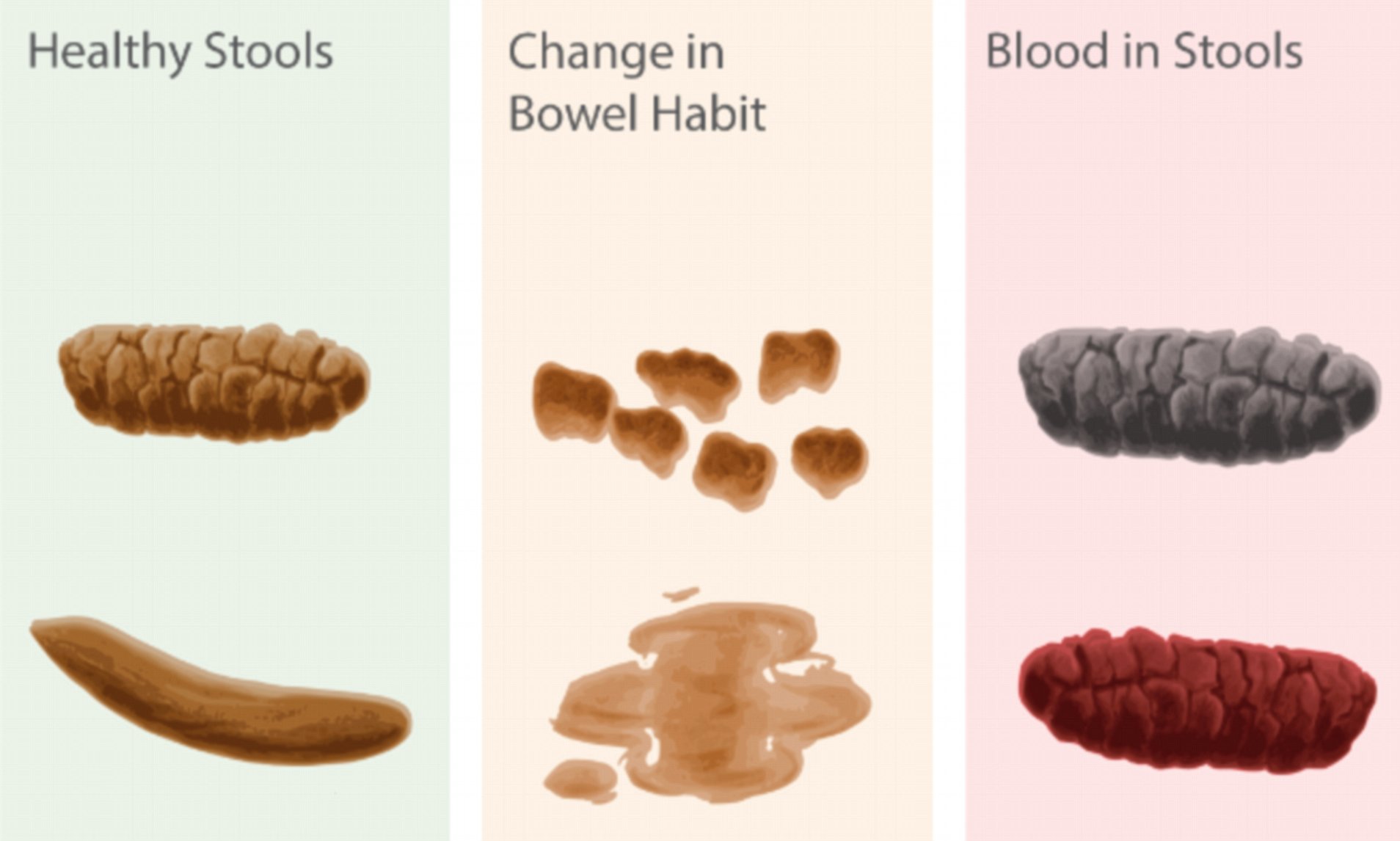 Before analysis, do not take laxatives, enzymes, sorbents, do not use rectal suppositories and ointments.
Before analysis, do not take laxatives, enzymes, sorbents, do not use rectal suppositories and ointments.
Before testing for occult bleeding of the gastrointestinal tract, a 4-5-day diet is recommended with the exclusion of meat, offal (liver, heart), fish, as well as iron, magnesium and bismuth preparations. However, when testing stool for occult blood using the Colonview method, only restriction of the above drugs is recommended.
A special container is used for tests for helminth eggs, cysts and vegetative forms of protozoa, as well as for inoculation for intestinal dysbacteriosis.
At GC Expert, you can get a consultation with a gastroenterologist specializing in the diagnosis and treatment of intestinal diseases, pass all the above tests or undergo a comprehensive diagnosis under the “Check-up intestines” program in two days.
Be healthy! Sincerely, gastroenterologist-nutritionist Svetlana Igorevna Kovaleva.
Feces in colon cancer: stool color in adult oncology, mucus, types of feces, photo with explanations
Changes in feces in cancer are different. Oncological diseases, including malignant tumors of the intestine, are dangerous because they do not cause any symptoms for a long time. But even when cancer symptoms appear, they are non-specific. The symptoms of bowel cancer are very similar to those of other diseases. A person may think for a long time that he has an intestinal disorder, because he “ate something wrong”, or some kind of infection, or hemorrhoids, or a violation of the stool due to problems with the liver, pancreas.
Oncological diseases, including malignant tumors of the intestine, are dangerous because they do not cause any symptoms for a long time. But even when cancer symptoms appear, they are non-specific. The symptoms of bowel cancer are very similar to those of other diseases. A person may think for a long time that he has an intestinal disorder, because he “ate something wrong”, or some kind of infection, or hemorrhoids, or a violation of the stool due to problems with the liver, pancreas.
It is important to take good care of your health. If you have unusual stool changes and other symptoms that persist for a long time, see your doctor and get tested. In most cases, this is not an oncological disease, but there is always a chance. If the symptoms are still caused by cancer, it is important to diagnose it as soon as possible and start treatment.
What are the symptoms of colon and rectal cancer?
The main manifestations that can occur with bowel cancer:
- Diarrhea or constipation that persists for several days.

- Change in the appearance of feces. It becomes thin, like a pencil, due to the fact that the tumor narrows the intestinal lumen.
- After going to the toilet, there is a feeling of discomfort, a feeling that the bowel has not been completely emptied.
- Bleeding from the rectum.
- Blood in the stool.
- Dark, tarry stools – in medical language, this appearance of feces is called chalky . More often this symptom occurs with lesions of the upper gastrointestinal tract.
- Pain, cramps in the abdomen.
- Unexplained weight loss.
- Constant weakness, increased fatigue.
Why should I get tested as soon as possible? If these symptoms are caused by cancer, then they indicate that the tumor has already grown quite strongly or has managed to spread in the body. The more time passes, the more the cancer progresses. This means that the prognosis worsens, the chances that the disease can be dealt with are reduced.
This means that the prognosis worsens, the chances that the disease can be dealt with are reduced.
Changes in bowel habits
Bowel cancer often manifests as changes in bowel frequency, quantity and consistency of stools. Some patients are concerned about constipation, a condition in which the passage of stool through the intestine is impaired. It manifests itself with symptoms such as:
- Absence of stool for more than three days.
- Pain, discomfort, abdominal cramps.
- The volume of feces decreases, it becomes dense.
- An unpleasant feeling of discomfort in the abdomen, a feeling of “fullness”.
- Bloating, an increase in the volume of the abdomen.
- Belching, gas.
Cancer sometimes develops acute intestinal obstruction is a life-threatening condition. It manifests itself in the form of severe cramping pains in the abdomen, constipation, nausea, and vomiting.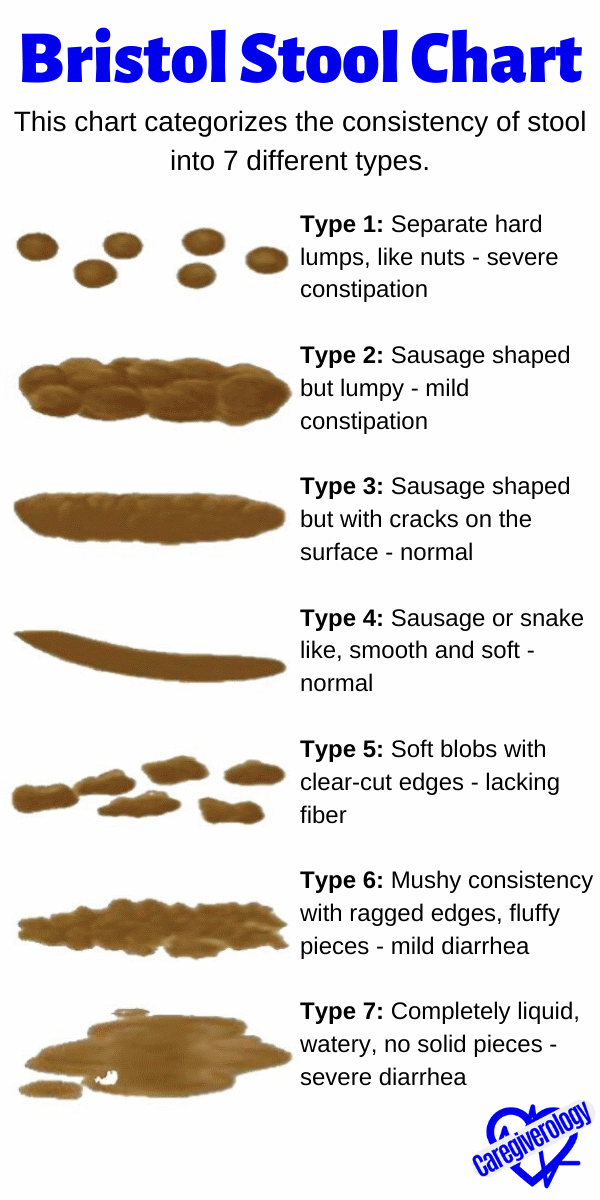 Due to a drop in the level of protein in the blood, edema develops, and due to fluid loss, dehydration. Rotting begins in the intestines, toxic products enter the bloodstream and poison the body. necrosis (necrosis) of the intestinal wall develops, its contents enter the abdominal cavity and lead to peritonitis. If a patient with acute intestinal obstruction is not provided with timely medical care, he will most likely die within 4-6 hours.
Due to a drop in the level of protein in the blood, edema develops, and due to fluid loss, dehydration. Rotting begins in the intestines, toxic products enter the bloodstream and poison the body. necrosis (necrosis) of the intestinal wall develops, its contents enter the abdominal cavity and lead to peritonitis. If a patient with acute intestinal obstruction is not provided with timely medical care, he will most likely die within 4-6 hours.
Euroonco offers all types of treatment for intestinal obstruction. Our surgeons perform operations on the intestines, install stents, apply ileostomies and colostomies. Patients who develop emergency conditions receive treatment in intensive care and intensive care units equipped with modern equipment.
Diarrhea is a condition in which frequent stools are noted – 3 or more times within 24 hours, while the feces have a liquid consistency. Sometimes pain and discomfort in the stomach bothers, sometimes not. If diarrhea persists for several days, you should consult a doctor.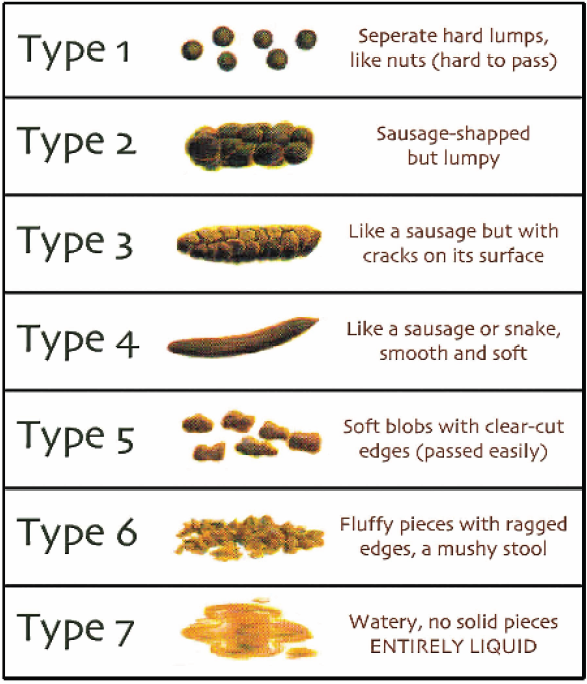
Constipation and diarrhea can be caused not only by cancer, but also occur as side effects of chemotherapy, radiation therapy. In order to cope with this symptom, the doctor may give some recommendations about diet and lifestyle, and prescribe medications. Diarrhea caused by chemotherapy usually resolves within 3 weeks after cancer treatment is completed.
Severe diarrhea, even if it is not caused by cancer, is dangerous because it leads to loss of fluid, electrolytes, and intestinal absorption of nutrients. This is fraught with dehydration, exhaustion, electrolyte imbalance.
Changes in the appearance of stools
Changes in the appearance of feces may indicate that there is cancer or other pathological process in the intestines. With constipation, it becomes more dense, with diarrhea – mushy, liquid. If the cancer partially blocks the intestinal lumen, the stool becomes thin, like a pencil (“ribbon stool”). In addition to cancer and benign neoplasms of the intestine, this symptom can be caused by diseases such as hemorrhoids, irritable bowel syndrome, colitis, parasites.
Discoloration of stools
With bowel cancer, stools can turn black, look like tar and have an unpleasant odor. Such stool is called melena, and it looks like this because the blood is exposed to digestive juices in the stomach, intestines. Thus, melena can be a manifestation of cancer of the esophagus, stomach, less often – cancer of the small intestine.
In order for the stool to darken and take on a tarry appearance, at least 500 ml of blood must enter the intestines. If such a symptom occurs, you should immediately consult a doctor!
If there is a suspicion of bleeding in the digestive tract, which is not manifested in a change in the appearance of feces (the so-called occult bleeding), a stool test for occult blood is prescribed. The most common type of study is benzidine test (Gregersen reaction) . This laboratory diagnostic method plays an important role in the detection of cancer and some other diseases, it is indicated in the following cases:
- Prolonged constipation, diarrhea, mushy stools.

- Pain in the abdomen.
- False urge to defecate.
- Unexplained loss of appetite, weight.
- If cancer is detected during a colonoscopy (endoscopy of the colon).
- If tumors or ulcers are detected during FEGDS (endoscopic examination of the esophagus, stomach, duodenum).
Fecal occult blood test is a very sensitive test. It can show a positive result in nosebleeds, bleeding gums. This must be taken into account and the results of the analysis should be evaluated in combination with other diagnostic methods.
Bleeding from the rectum, blood in the stool
If the source of bleeding is in the lower intestine, the patient may experience the following symptoms:
- traces of blood on toilet paper;
- traces of blood on underwear, sheets;
- streaks of blood in feces;
- bleeding from the rectum.
If you notice more than two traces of blood on toilet paper, blood in the stool, or bright scarlet blood coming out of the rectum, you should immediately consult a doctor.
Mucus in the feces in an adult
Mucus in the stool in an adult is not a typical manifestation of malignant tumors of the intestine. Cancer is suspected when this symptom is combined with others, such as bleeding, chronic diarrhea, etc.
Most often, jelly-like mucus in the stool or even mucus instead of stool (excreted between bowel movements) are signs of infections in the intestines. Sometimes they are caused by a decrease in the tone of the sphincter muscle of the rectum. In any case, in order to exclude cancer or other serious disease, it is better to immediately visit a doctor and get checked.
Prevention and early diagnosis of bowel cancer
If a patient has fecal changes, they are referred to a coloproctologist. During the appointment, the doctor finds out what symptoms bother the patient, for how long, what he has been ill for during his life, and whether there are any intestinal pathologies in close relatives. Then a digital examination of the rectum is performed.
In order to detect cancer and other bowel pathologies, the following tests are used:
- Proctoscopy and colonoscopy – endoscopic examination of the rectum and colon. These diagnostic methods allow you to visualize cancer, polyp and other pathological changes.
- Biopsy is an examination that can be done during an endoscopy. The doctor, using a special tool, receives a fragment of a pathologically altered area of the intestinal mucosa and sends it to the laboratory, where it is examined under a microscope. If malignant cells are found, it is cancer.
- Fecal occult blood test.
- Complete blood count – helps to detect anemia as a result of bleeding.
- If bowel cancer has already been diagnosed, a blood chemistry test is done to evaluate liver function, as there may be cancer metastases in the liver.
- Blood test for tumor markers: cancer embryonic antigen (CEA) and CA 19-9 .
 This study is not very informative in the diagnosis of cancer, as it can give false positive and false negative results. Tests for tumor markers are used as part of a comprehensive examination to monitor the effectiveness of treatment and detect relapse.
This study is not very informative in the diagnosis of cancer, as it can give false positive and false negative results. Tests for tumor markers are used as part of a comprehensive examination to monitor the effectiveness of treatment and detect relapse. - Once colorectal cancer is diagnosed, CT scans, ultrasound, MRI, angiography, chest X-ray, PET scans are done to evaluate its spread and stage.
Screening tests help diagnose cancer before stool changes occur. Colonoscopy is used as the main type of screening. It is recommended for all people over 50 years of age. At Euroonco, this study is performed by experienced doctors using modern equipment. In order for the patient not to experience discomfort during the procedure, our doctors immerse him in a state of light anesthesia – “medicated sleep”.
Prevention of colon cancer
To reduce the risk of colorectal cancer, follow these guidelines:
- Maintain a healthy weight.


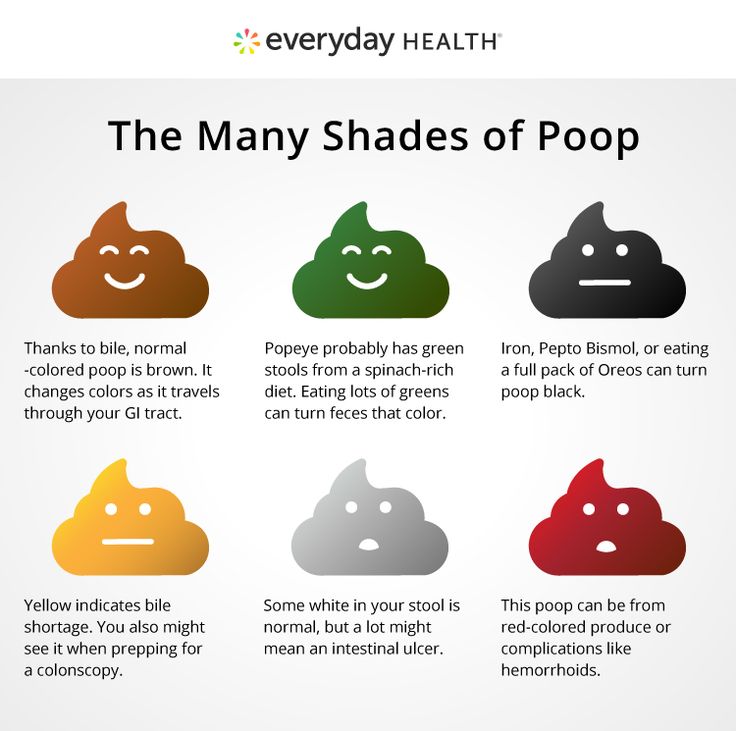 It’s darker if you ate a dish with nori, a black burger. In addition, it is worth thinking about drugs or dietary supplements that you can take – bismuth and iron preparations give dark, closer to green stools.
It’s darker if you ate a dish with nori, a black burger. In addition, it is worth thinking about drugs or dietary supplements that you can take – bismuth and iron preparations give dark, closer to green stools. Often yellow stools are also a sign of abnormality.
Often yellow stools are also a sign of abnormality.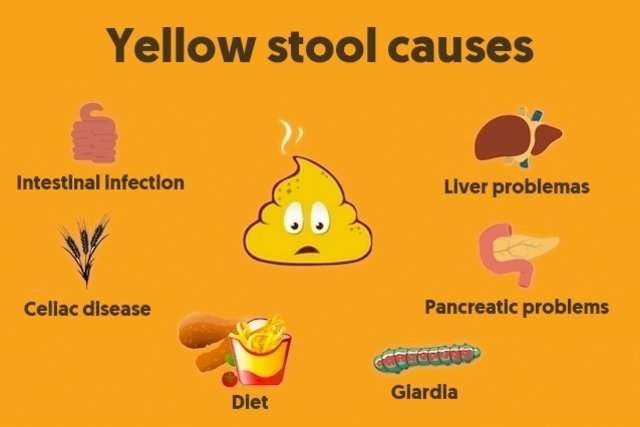


 This study is not very informative in the diagnosis of cancer, as it can give false positive and false negative results. Tests for tumor markers are used as part of a comprehensive examination to monitor the effectiveness of treatment and detect relapse.
This study is not very informative in the diagnosis of cancer, as it can give false positive and false negative results. Tests for tumor markers are used as part of a comprehensive examination to monitor the effectiveness of treatment and detect relapse.